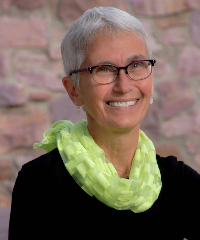Science Cafe Posts - Mission Mosquito
GLOBE Breadcrumb
- Home >
- Mission Mosquito >
- Science Cafe Posts
Banner and NavBar
Science Cafe Posts
Please complete your formal training to unlock the ability to create GLOBE Blogs.
See Training > User Roadmaps in the site navigation to learn more.Blogs

Cases of mosquito-borne disease are increasing in the United States. Because these diseases are directly correlated with the abundance of mosquitoes, finding what environmental variables impact mosquito populations is essential to prevent the transmission of disease. For the SEES 2020 Mosquito Mapper research project, our group decided to focus on identifying the statistical correlations...

Through my research, I tried to find a connection between plants and mosquitoes, so that humans can find a safe, natural, and aesthetically pleasing way to deter these disease vectors. I began my search for answers by visiting nature preserves in my area to sample water, set mosquito traps, and take pictures of the plants. I also used the GLOBE Observer Mosquito Habitat Mapper data from the...

Hi everyone, my name is Bhaskar J, and I'm interning with the SEES Mosquito Mappers research team this summer, in which we use the GLOBE Observer citizen science app. There are a lot of moving parts to it, but overall it's been an incredible experience! One part of the program is catching mosquito larvae in our home-made traps. See the attached images showing how I made mine! Figure....

To draw statistically valid conclusions about ecological trends, such as the relationship between land cover and mosquito population dynamics, land areas of interest must be sampled in a consistent manner. Numerous ground observations of local areas can help scientists gain insight of the landscape, especially in regions where remote sensing techniques fail to measure certain land...

Coming into the NASA SEES Mosquito Mapper program, I was beyond nervous. Living in Washington State in an area with few mosquitoes, I had no idea how I would be able to collect enough data for the final research project, especially since this was the first time I was conducting research on my own. In addition to that, the program was entirely virtual! As a visual learner, I was worried that...

Through the SEES Mosquito Mappers internship, I have learned how to skeptically interrogate the world around us and devise profound questions that can shape our understanding of the natural universe. I came to this internship knowing very little about science except for the basics of the scientific method and the “facts” that we are mandated to memorize in our educational system. I...

Guest blog by SEES Virtual Intern Sweta Alla NASA STEM Enhancement in Earth Sciences: Mosquito Mappers Virtual High School Summer Internship. It’s a mouthful to say, but that title describes exactly what I did last summer. As a virtual intern, I collaborated with NASA scientists and our intern cohort and developed a research project that I presented at a science symposium at the end of the...

You have submitted GLOBE Observer Mosquito Habitat Mapper observations, but are still unsure how to access and analyze that data? This blog outlines the steps to download data into a spreadsheet, describes the data found in each column, and discusses what to do with the two sets of latitude and longitude data associated with each observation. Download Data First you will need to...

In this pro tip, you will learn how to increase your location accuracy while using the GLOBE Observer app and learn why location accuracy matters. How is location determined? By using a Global Positioning System (GPS) receiver, (either hand-held or built into your mobile device), you are able to obtain your geographical position on the Earth’s surface. The antennas on your GPS receiver...

Thirty-one seniors armed with the GLOBE Observer mobile app hiked Kamanaumui Valley at the end of October. During the 3.3 mile trek, hikers made Land Cover and Mosquito Habitat observations, while passing verdant tropical vegetation, the ruins of a colonial manor, a biological restoration plot and ancient petroglyphs. OLLI trekkers used the GLOBE Observer app to make observations The...
Showing 91 to 100 of 120 entries.





